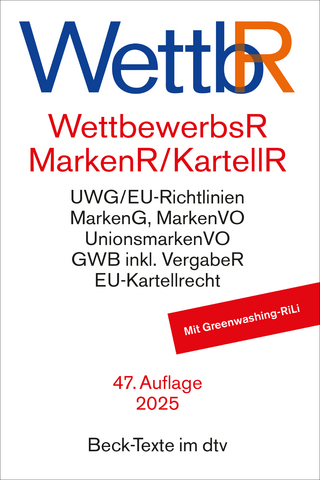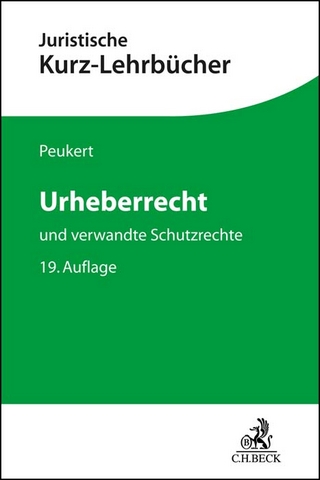
Misconduct Claims and Defenses Against Assertions of Patent Infringement
Oxford University Press Inc (Verlag)
978-0-19-533720-4 (ISBN)
- Titel ist leider vergriffen;
keine Neuauflage - Artikel merken
This book is designed to provide patent litigators with a double arsenal of unprecedented case-law analysis and litigation strategy related to the "wild cards" of infringement cases: affirmative defenses and counterclaims based on assertions of patent-holder misconduct. Such claims can include: BL inequitable conduct, including intentional failure to cite material references and false or misleading declarations BL misuse of the litigation process, including baseless and bad-purpose suits BL claims that an opposing party knew or should have known that the patent was invalid or not infringed BL antitrust law violations BL tortuous interference BL defamation BL RICO allegations In addition, each chapter of the book has a section devoted to litigation strategy related to a particular claim, with practical guidance on a range of issues including: BL document demands and party depositions used to show that putative inventor had access to another's similar invention BL deposition tactics to establish what the inventor or patent holder knew and when they knew it, along with indications of intent.
BL the use of expert testimony to establish materiality or intent BL summary judgment and motion practice BL the use of expert testimony to prove claims of market definition and market power BL third-party discovery to prove what persons skilled in the art understood or how the market functions BL waiver of privilege issues BL the use of discovery to establish the existence of past licenses and negotiations BL post-verdict Rule 11 claims or recovery under 35 USC 285
Joel Davidow is a partner at Kile Goekjian Reed & McManus in Washington, DC, an intellectual property boutique firm. He spent 15 years in the Antitrust Division of the Department of Justice and has been a senior antitrust partner in major New York City and Washington, D.C. law firms, representing clients from Japan, Europe, and the United States in antitrust, patent, and trade litigation matters.
I. ABUSE OF THE PATENTING PROCESS; A. Obtaining a patent on a product or process the patentee did not invent as claimed; 1. Derivative invention / known anticipation (patentee knew that his claimed invention was disclosed by another or was already in existence); 2. Inaccurate or Incomplete disclosure of inventorship; a) Harmless omission; b) Omission of independent co-inventor; 3. On sale bar (more than one year since first sale); 4. Inadequate disclosure (35 U.S.C. 112); a) Invention not described; D) BEST MODE WAS KNOWN BUT CONCEALED; (1) Best mode existed and was known by the inventor; (2) Best mode was inadequately disclosed; A1. Litigation Strategies; 1. Derivation; a) Document demands and party depositions used to show that putative inventor had access to anothers similar invention prior to claimed date of perfecting the patented invention; 2. Inventorship; a) Document demands and party deposition to develop proof that a co-inventor was not named and would have had independent rights (i.e., rights not assigned to same firm a disclosed inventors were.); 3. Disclosure; a) Expert testimony regarding adequacy, or deposition of persons skilled in the art; B. Inequitable conduct; 1. Intentional failure to cite material references known to the applicant; a) No but for test for materiality (Molins PLC v. Textron, Inc., 48 F.3d 1172 (Fed. Cir. 1995).); b) Intent must be found, but circumstantial evidence can be sufficient (Kingsdown Medical Consultants, Ltd. v. Hollister Inc., 863 F.2d 867 (Fed. Cir. 1988).); 2. False or misleading declarations; a) Must be knowingly false, and may be fatal even if unrelated to patentability (e.g. as to fees or timing); b) Arguments against prior art are generally allowed even if fallacious; B1. Litigation Strategies; 1. Materiality (generally proved by expert testimony); 2. Intent (expert may be used to explain MPEP procedures and requirements) Discovery from inventor or patent prosecution team is needed to test credibility of reasons for not submitting reference; 3. Dilemma may arise if defense alleges that submitted art is a 102 (anticipatory) reference, since this tends to render unsubmitted references cumulative (Rolls Royce); II. ABUSE OF THE LITIGATION PROCESS; A. Baseless Suit; 1. Flaw in patent is known, but suit is brought anyway; 2. No proof of probable infringement was obtained prior to suit; 3. Patent holder waited to long to sue, or promised not to, thus justifying a laches or estoppel defense; A1; 1. Discovery of plaintiff to probe basis for the case. (privilege issue); 2. Lack of testing may be crucial; 3. Create the predicates for a Rule 11 claim after victory (e.g. warning to plaintiff), or for a recovery under 35 USC sec. 285 (which requires victory and egregious misbehavior but does not require a warning); B. Bad purpose suit; 1. Harm is to come from fact of suit, not from victory (Handgaards; PRE); 2. Lack of merit must also be shown (PRE); B1. Litigation Strategies; 1. Document discovery of plaintiff to find bad purpose documents; 2. Waiver of privilege issue may create dilemma for plaintiff; III. ABUSE OF THE COMPETITIVE OR LICENSING PROCESS; A. Licensing Abuse ( Misuse); 1. Defendant has standing even if not affected; PER SE MISUSE (BASED ON S. CT. RULINGS IN MERCOID CORP. V. MID-CONTINENT INVESTMENT CO., 320 U.S. 661 (1944); MERCOID CORP. V. MINNEAPOLIS-HONEYWELL REGULATOR CO., 320 U.S. 680 (1944); BRULOTTE V. THYS CO., 379 U.S. 29 (1964)), INCLUDES; a) Practices that Antitrust law treats as illegal per se, though these are shrinking (e.g. RPM); b) Overextension of the time or scope of the patent grant (Brulotte rule ?); 3. Antitrust rule of reason test is not satisfied (but market must be defined); 4. Failure to purge is shown; A1. Litigation Strategies; 1. Discover all past licenses and negotiations; 2. Hire expert to prove market and market power; B. Antitrust Misconduct; 1. Unacceptable licensing practices; a) Per se illegal practices (e.g. horizontally instigated minimum price fixing as to licensed products); b) Unreasonable practices; 2. Cartel conduct violative of Sherman Act sec. 1 (compare U.S. v. Singer, 374 U.S. 174 (1963) to MedImmune, Inc. v. Genentech, Inc., 427 F.3d 958 (Fed. Cir. 2005)); B1. Litigation Strategies; 1. Hire expert (or counter expert) re market definition and patentees market power; 2. Use discovery to look for predation documents in patentees files
| Erscheint lt. Verlag | 31.3.2010 |
|---|---|
| Verlagsort | New York |
| Sprache | englisch |
| Maße | 155 x 233 mm |
| Gewicht | 380 g |
| Themenwelt | Recht / Steuern ► EU / Internationales Recht |
| Recht / Steuern ► Wirtschaftsrecht ► Urheberrecht | |
| ISBN-10 | 0-19-533720-4 / 0195337204 |
| ISBN-13 | 978-0-19-533720-4 / 9780195337204 |
| Zustand | Neuware |
| Haben Sie eine Frage zum Produkt? |
aus dem Bereich


